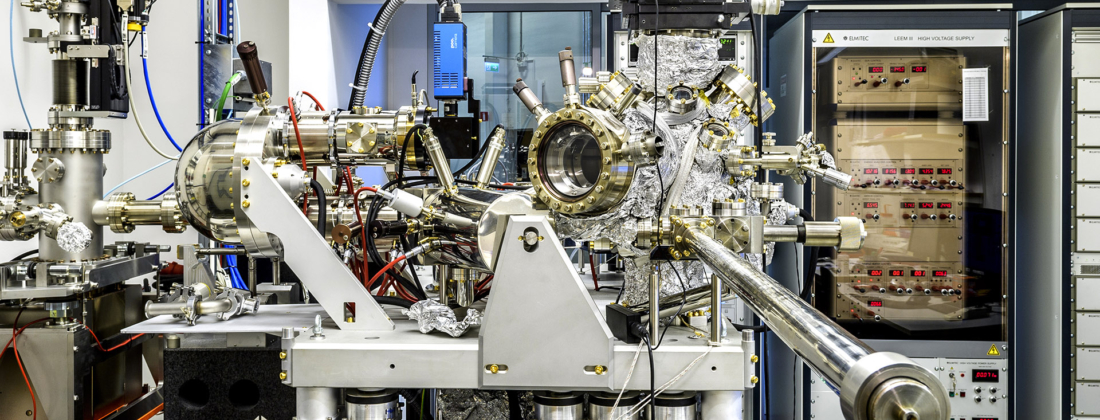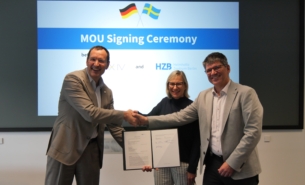Scientists demonstrated a strong coupling of very thin ferromagnetic permalloy layers to the antiferromagnetic spintronics compound Manganese Gold. This enabled them to apply well-established read-out methods commonly applied to ferromagnets in antiferromagnetic spintronics as well.
Up to this point, all commercially available spintronics uses ferromagnets as active elements. However, in principle, antiferromagnetic spintronics hold the advantage in the development of higher operation frequencies. This is because the internal dynamics of the staggered magnetization of an antiferromagnet is three orders of magnitude faster than the typical frequencies with which scientists can manipulate the orientation of the magnetization in a ferromagnet. An additional benefit of antiferromagnets is their lack of net magnetization – which can prevent memory loss which ferromagnetic devices suffer when exposed to an external magnetic field – as well as their ability to host a higher density of bits on a chip in principle.
One of the major challenges facing the field of antiferromagnetic spintronics up to this point has been that technologically relevant read-out in spintronics requires significant magnetoresistance effects, meaning resistance changes larger than 20 % associated with a reorientation of the staggered magnetization..
This is where an international group of researchers hailing from Johannes Gutenberg University, Forschungszentrum Jülich, Diamond Light Source, and MAX IV came in with a novel experiment.
“What we are showing here is that you can have a really strong coupling of the staggered magnetization of an antiferromagnet to a very thin layer of a ferromagnet,” said the study’s lead author apl. Prof. Dr. Martin Jourdan of the Institute of Physics at Johannes Gutenberg University of Mainz. He went on to explain that the team managed to demonstrate that the coupling of the antiferromagnetic compound Manganese Gold with a thin ferromagnetic permalloy was strong enough to still ensure very fast dynamics.
What’s more, the coupling of the antiferromagnetic compound to the thin ferromagnet finally allows scientists to use any of the established technology for reading out ferromagnets on antiferromagnetic materials as well.
“It is also essential that the ferromagnet is very thin and it’s strongly coupled as otherwise, the relatively slow dynamics of the ferromagnet would dominate,” explained Jourdan. “However, with a thin and strongly coupled ferromagnet, the major advantages of using antiferromagnets as active elements are essentially preserved.”
MAX IV’s MAXPEEM beamline and Diamond Light Source provided the x-ray microscopy necessary to carry out the experiment. “In MAXPEEM, you have a perpendicular angle of incidence and with this geometry, you get great contrast,” according to Jourdan.
The far-reaching goal in mind for this line of research is the development of much faster spintronics devices such as non-volatile magnetic random-access memory (MRAM). Based on ferromagnets, MRAM has already proven to be much faster technology than flash memory, however, MRAM’s speed when based on antiferromagnets could be increased by three orders of magnitude meaning a transition from GHz to THz frequencies.
“On your computer’s solid-state disk, the information is still stored as charge. So basically, you have a field-effect transistor, and you write charge on it, and you want that charge to stay even if you switch off your computer because otherwise, you would lose the memory. That is called non-volatile memory. MRAM technology based in ferromagnets is an alternative to this, albeit up to this point much more expensive. When replacing the ferromagnetic layers with antiferromagnets in MRAM, it could become even more powerful,” said Jourdan.




